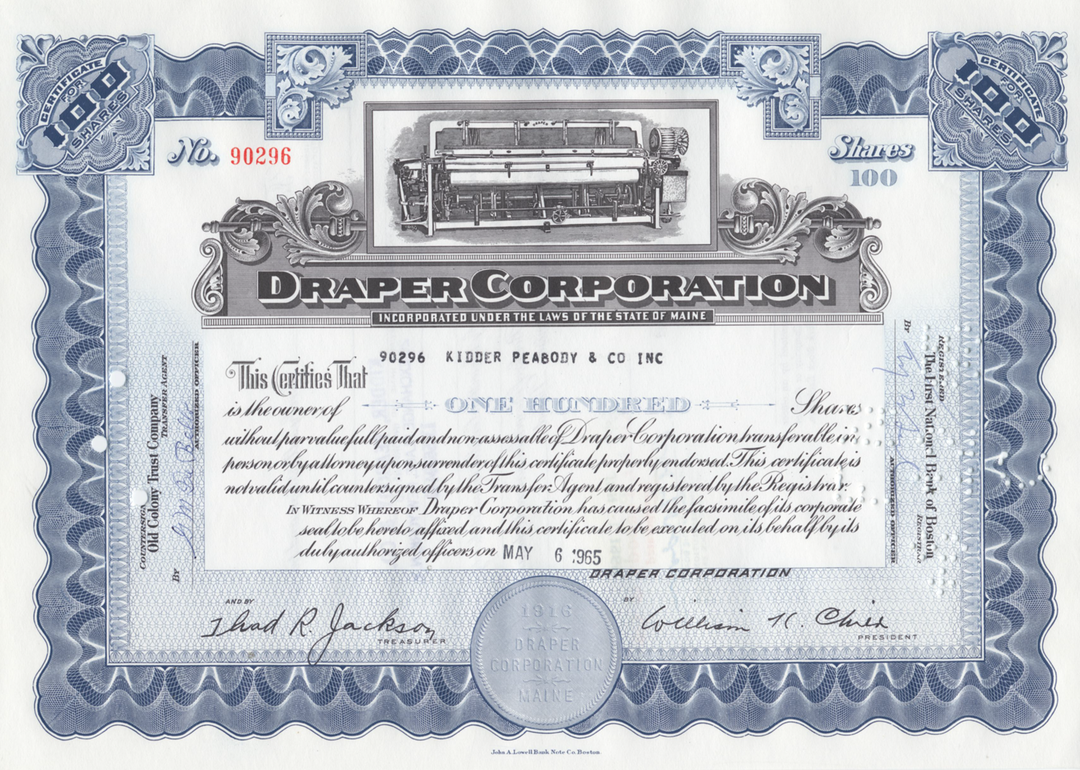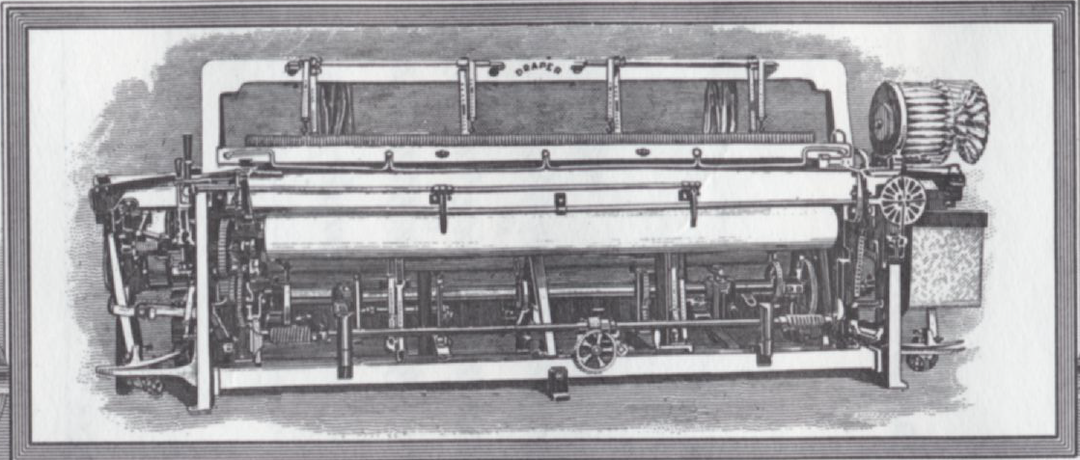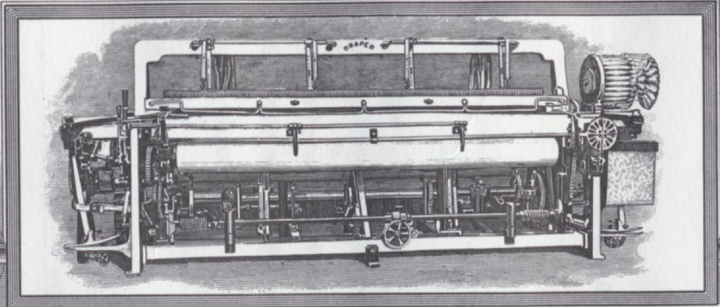Draper Corporation
- Guaranteed authentic document
- Orders over $75 ship FREE to U. S. addresses
Product Details
CompanyDraper Corporation
Certificate Type
Capital Stock
Date Issued
1960's
Canceled
Yes
Printer
John A. Lowell Bank Note Company
Signatures
Machine printed
Approximate Size
11 1/2" (w) by 8" (h)
Images
Representative of the piece you will receive
Guaranteed Authentic
Yes
Additional Details
NA
Historical Context
In the early 19th century, Ira Draper was a prosperous farmer from Weston, Massachusetts, with an ability for tinkering and improving machinery, such as a threshing machine that was a great improvement on any previous one made at the time. His great-great grandfather, James Draper had landed in Boston from England in 1650, and was "one of the first men in the American colonies to engage in the business of weaving and selling cloth".
In 1816, shortly after the first successful power loom in the United States was developed by Paul Moody at Waltham, Massachusetts, Ira was granted a patent on an improved flyshuttle hand loom and the first self-acting temple. A temple is part of a loom used to improve the edges of the fabric. The improvement allowed a weaver to run two power looms instead of one. Its labor-saving feature appealed to Ira, and he decided to push its sale to weavers in the area. In 1829 he took out a patent for an improvement on his original invention. In 1830 he sold his patents and the business to his eldest son, James of Wayland, Massachusetts.
Ebenezer, a younger brother, bought the business in 1837, and later moved it from Wayland to Uxbridge, Massachusetts, the center of the growing textile mill area of the Blackstone Valley. In 1841, Ebenezer moved the company to nearby Hopedale, Massachusetts, where a new Christian settlement had been formed by Adin Ballou in 1841. Known as “Fraternal Community No. 1” it was a communal association determined to create an ideal society. Hopedale was one of the most successful communal experiments of the era, but failed after fifteen years.
Another brother George came to Hopedale in 1853 to join his brother in the firm of E.D. & George Draper. A year later he bought an interest in the new Dutcher temple, then made in North Bennington, Vermont that was an improvement on previous models. Two years later, the two companies would combine forces at Hopedale and become known as W. W. Dutcher & Company. This would be the first of several industries to be located in Hopedale within the next dozen years, for all of which E.D. & George Draper became managers and agents. Among the others were the Hopedale Machine Company and Hopedale Furnace Company.
Ebenezer D. Draper retired in 1868. Over the 42 years that he was with the company, he patented many inventions that had improved the art of textile weaving.
Between 1868 and 1887 George Draper became the leader and driving force behind the company started by his father years before. After Ebenezer's retirement in 1868, the company ventured into and made improvements the developing sector of ring spinning. By 1887, George Draper owned the patent rights or controlled the sale of 12 named varieties of ring spindles. Draper also made improvements to warpers and spoolers in this period.
In 1917, the company became known as Draper Corporation. Focusing on looms for the cotton textile industry, Draper became part of the "Big Three" textile machinery makers in the Blackstone Valley, along with Crompton & Knowles of Worcester, Massachusetts, which focused on looms for wool, and the mighty Whitin Machine Works in nearby Whitinsville, Massachusetts which largely made spinning frames and cotton preparation machinery.
The Draper automatic looms were a significant factor in the movement of the cotton textile industry to the South during this time. Draper even financed the construction of some of new Southern mills, to be filled with their superior product. Many Northern mill owners were reluctant, or were so heavily invested in older, outdated equipment that they could not afford to make the switch.
At one time, more than 3,000 people were employed there. Long after most of the New England mills had closed, Draper continued to improve their products and sell them to the Southern textile companies, and others around the world.
In 1967, control of the Draper Corporation was passed to Rockwell International. Eventually, competition from the highly technical, increasingly computerized Japanese machinery makers led to a demise in the textile machinery industry in the Blackstone Valley. Production ceased in the mid-1970s.
The Draper Mill was torn down in the summer of 2021.
Related Collections
Additional Information
Certificates carry no value on any of today's financial indexes and no transfer of ownership is implied. All items offered are collectible in nature only. So, you can frame them, but you can't cash them in!
All of our pieces are original - we do not sell reproductions. If you ever find out that one of our pieces is not authentic, you may return it for a full refund of the purchase price and any associated shipping charges.









